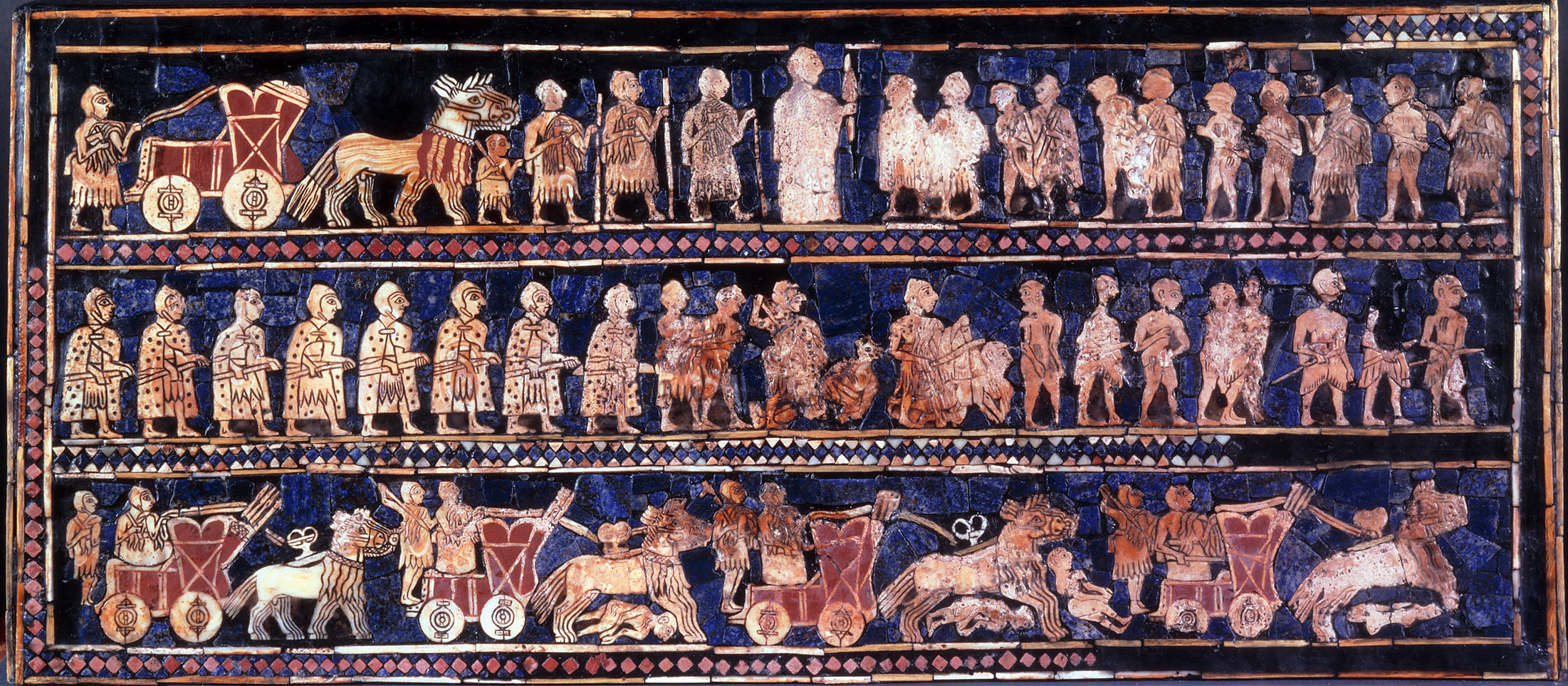AP Art History: The Standard of Ur-- #16
Standard of Ur
This Ancient Mesopotamian work of art is still somewhat of a wonder to archeologists. A two sided, wooden box of sorts, the Standard of Ur is thought to have been a flag, placed on a pole. The two sides depict war and peace with many little figures on both.
Bio of the Work:
Title: Standard of Ur
Date: ~ 2600-2400 BCE
Medium: Wood with lapis lazuli, shell, and red limestone
Museum: The British Museum in London
Analysis:
The Standard of Ur 's two sides depict Sumerian life in war and peace. The 'war' side of the standard has one of the earliest representations of an army, including chariots, swords, captives, and fatalities of the violence. In contrast with the other, the 'peace' side includes more of daily life. This side has three levels, and some people believe these levels to be the ranks of society. The uppermost level depicts a feast and a clear figure head who is even larger that the rest, braking out of the frame, showing art's hierarchy of scale. The other two show laborers working. Many archeologists believe that this was a flag of sorts to be put on a pole and shown out to the city.


No comments
Post a Comment